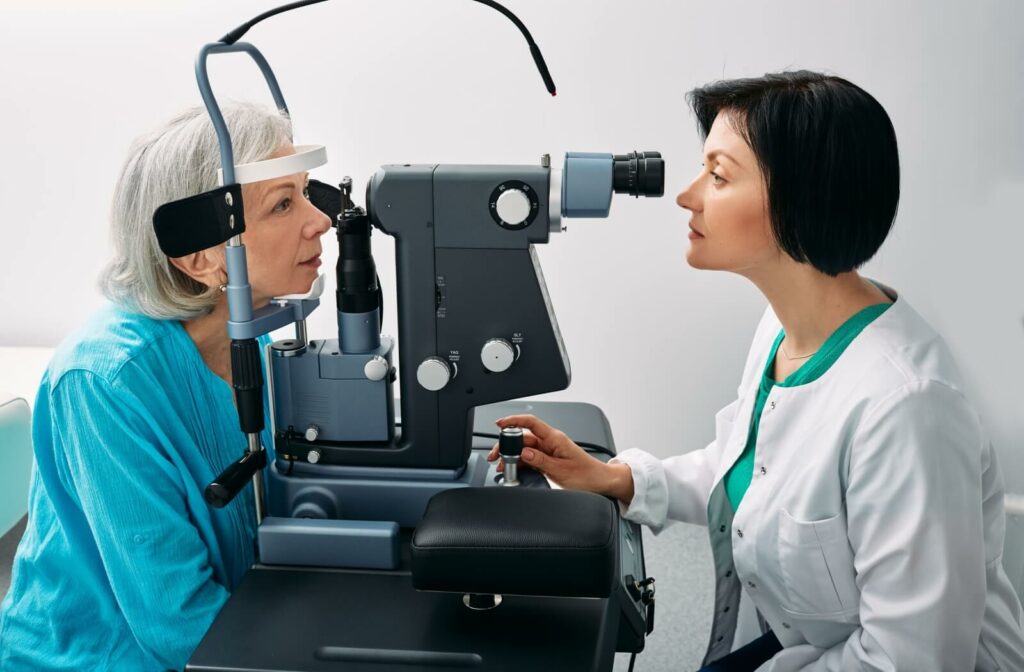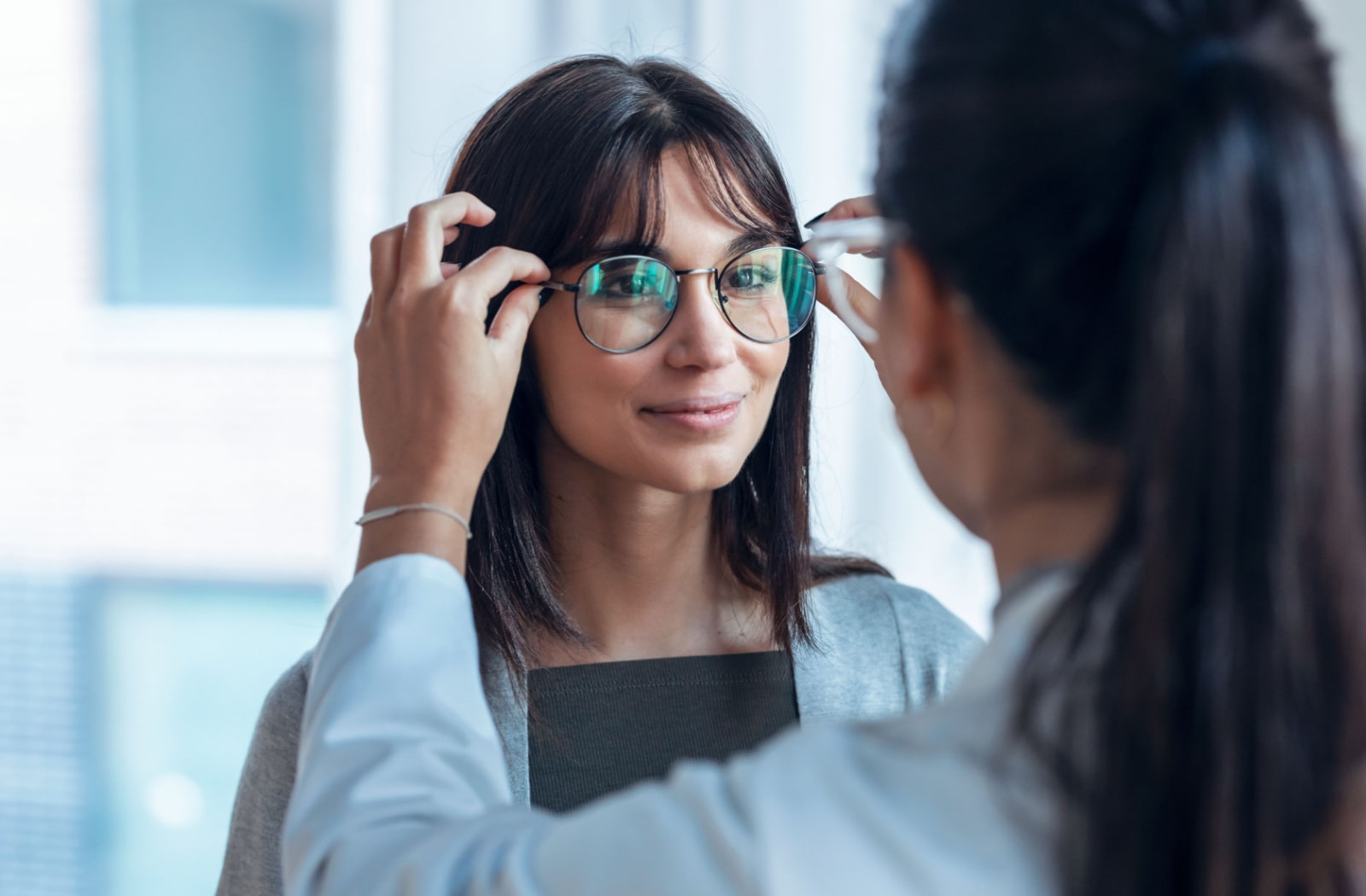Exploring the Most Current Technological Advancements in Optometry and What They Mean for Eye Doctors
From the accuracy of Optical Comprehensibility Tomography to the nuanced insights supplied by AI-driven diagnostic devices, these advancements are setting new requirements in client assessment and treatment. As these developments penetrate the method, optometrists are faced with the difficulty of accepting these tools to boost patient end results.
Technologies in Diagnostic Tools
Advancing the field of optometry, technologies in analysis tools have actually transformed the means eye treatment specialists examine and identify visual problems and ocular conditions. The past years has actually witnessed significant technological innovations, enabling more detailed and accurate examinations. Optical Comprehensibility Tomography (OCT), for instance, gives high-resolution cross-sectional photos of the retina, enabling for the very early detection of conditions such as glaucoma and age-related macular deterioration. This non-invasive imaging strategy has become essential in contemporary optometric technique.
One more key development is the intro of advanced corneal topography systems, which map the surface area curvature of the cornea with precision. These devices are especially useful for suitable contact lenses and identifying corneal conditions. Digital retinal imaging has changed standard ophthalmoscopy, providing in-depth, scenic views of the retina that help with detailed visual exams.
The growth of wavefront aberrometry has additionally been vital, enabling the analysis of refractive errors with unequaled accuracy (Eye Doctor Optometrist). This modern technology helps in personalizing restorative lenses and boosting surgical results for refractive surgical treatments. Collectively, these diagnostic developments equip eye doctors to provide superior patient treatment, ensuring early treatment and tailored therapy methods, eventually boosting aesthetic health end results
AI in Individual Monitoring
Building on the foundation of sophisticated diagnostic devices, the unification of fabricated knowledge (AI) in individual monitoring stands for a transformative jump for optometry. AI systems are significantly used to boost performance, accuracy, and customization in client care. By assessing large quantities of information, AI can recognize patterns and predict possible eye problems, making it possible for eye doctors to tailor interventions better. This capability is vital in managing chronic eye conditions such as glaucoma and diabetic retinopathy, where early discovery and continuous tracking are key.
Furthermore, AI-driven systems facilitate streamlined patient interactions and administrative processes. Automated organizing, virtual assessments, and personalized follow-up plans not only improve individual contentment but likewise optimize time monitoring for professionals. These systems can triage patients based on the seriousness of their conditions, making certain that those in essential demand receive timely focus.
Furthermore, AI enhances decision-making by offering optometrists with evidence-based suggestions and therapy pathways. By integrating data from electronic health documents, AI tools supply understandings that educate scientific decisions, lowering the threat of errors and enhancing individual end results. As AI proceeds to progress, its role in client monitoring will likely broaden, improving the landscape of optometric care.
Developments in Retinal Imaging
In the realm of optometry, retinal imaging has actually witnessed exceptional technical innovations that are boosting analysis capacities and person treatment. Developments such as Optical Comprehensibility Tomography (OCT) and fundus digital photography have actually changed just how optometrists evaluate the retina and imagine. OCT, specifically, offers high-resolution, cross-sectional images of the retina, enabling the in-depth exam of its layers. This capacity is important for very early discovery and administration of problems like glaucoma, diabetic retinopathy, and age-related macular deterioration.
Improved imaging modalities like OCT angiography are more refining diagnostic accuracy. This non-invasive method maps blood flow in the retina, using important insights right into vascular health and wellness without the need for color injections. Additionally, flexible optics technology is being incorporated into retinal imaging systems to deal with ocular aberrations, supplying unprecedented photo clearness. Such advancements help with the recognition of minute retinal adjustments that could indicate disease development.
In addition, developments in expert system are boosting retinal imaging by enabling automatic evaluation of huge datasets. These systems assist eye doctors in recognizing patterns a measure of pathology, therefore improving analysis precision and effectiveness. Collectively, these innovations are transforming retinal imaging into a foundation of modern eye care, enhancing results and increasing healing possibilities.
Teleoptometry's Growing Function
Teleoptometry is increasingly coming to be an important element of eye care, driven by advancements in data and diagnostic devices. As optometry welcomes digital makeover, teleoptometry promotes remote appointments, permitting eye doctors to expand their services past typical limits. This is specifically beneficial in rural and underserved locations where access to specialized eye care is frequently limited. By leveraging high-resolution video clip conferencing and progressed retinal imaging, eye doctors can carry out extensive eye examinations from afar, making certain prompt diagnosis and treatment.
The integration of expert system (AI) further enhances teleoptometry, making it possible for the evaluation of aesthetic data and assisting in the detection of ocular conditions such as glaucoma and diabetic retinopathy. AI-powered formulas see this site can swiftly analyze intricate imaging information, giving eye doctors with beneficial understandings that bolster professional decision-making.
Moreover, teleoptometry sustains continuity of treatment through seamless combination with electronic wellness records (EHRs), enabling optometrists to preserve comprehensive individual backgrounds. When seeking advice from with various specialists., this makes certain that clients get regular and customized care also.
Despite these advantages, difficulties continue to be, consisting of guaranteeing information protection and managing individual expectations. Nevertheless, teleoptometry represents a substantial stride towards more obtainable, efficient, and patient-centered eye care. As technology evolves, its role is positioned to expand further.

Future Fads in Eye Treatment
A myriad of ingenious trends visit this website is readied to improve the future of eye care, driven by technical improvements and the advancing needs of individuals. One considerable pattern is the assimilation of expert system (AI) in diagnostics, which guarantees to enhance the precision and performance of eye assessments. AI algorithms can analyze huge quantities of information from retinal images, potentially finding conditions like diabetic person retinopathy and glaucoma earlier than typical methods.
Additionally, tailored medication is acquiring grip in optometry, with genetic testing informing personalized therapy plans. This method intends to optimize individual results by tailoring interventions to specific hereditary profiles. Wearable modern technology, such as wise call lenses, is also on the horizon, offering real-time tracking of intraocular pressure or glucose levels, hence giving constant understandings right into systemic and ocular health.
The fostering of augmented fact (AR) and digital truth (VR) in training and client education is an additional arising trend. These technologies use immersive experiences that can enhance understanding and skills both for patients and optometrists. As these trends progress, optometrists need to stay abreast of technological innovations to supply sophisticated care, making sure enhanced individual results and complete satisfaction in the dynamic landscape of eye care.
Conclusion

Jointly, these analysis improvements empower eye doctors to deliver remarkable person care, guaranteeing very early treatment and customized therapy methods, ultimately boosting visual health and wellness outcomes.

As these innovations proceed to develop, optometrists need to adapt and incorporate them into technique, ultimately optimizing workflow performance and boosting the criterion of eye treatment provided to clients.
Comments on “How an Eye Doctor Can Help Avoid Vision Problems in Chino”